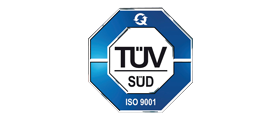Project Topics On Wind Energy, we suggest numerous interesting project topics. To assist you investigate these topics in an efficient way, an explanation and ideas for the simulation model are offered by us for every topic:
- Wind Turbine Performance Analysis
- Aerodynamic Performance of Wind Turbine Blades
Explanation: To enhance effectiveness, the aerodynamic features of various blade designs have to be examined.
Simulation Model:
- Software: For CFD simulations, ANSYS Fluent or MATLAB/Simulink with Simscape has to be employed.
- Model: Particularly for turbine blades, a 3D model should be developed. To study power coefficient, drag, and lift, the airflow must be simulated.
Major Parameters:
- Angle of attack and tip-speed ratio.
- Wind speed and direction.
- Blade geometry and airfoil profiles.
Anticipated Results:
- For high power production, it could offer enhanced blade design.
- Based on how turbine effectiveness can be affected by various airfoil shapes, this project could provide analysis.
1.2. Impact of Blade Pitch Control on Energy Production
Explanation: Focus on exploring how the energy production of a wind turbine is affected by adapting blade pitch.
Simulation Model:
- Software: For mechanical modeling, MATLAB/Simulink should be utilized with Simscape.
- Model: A variable-pitch wind turbine should be simulated. In terms of wind speed variations, the pitch angle must be adapted.
Major Parameters:
- Turbine rotational speed.
- Blade pitch angles.
- Wind speed variations.
Anticipated Results:
- For ideal pitch control policies could be detected.
- This topic could provide enhanced turbine lifespan and energy capture.
- Wind Farm Layout Optimization
2.1. Wake Effect Analysis in Wind Farms
Explanation: On the wind turbines functionality in a farm, the implication of wake effects has to be examined.
Simulation Model:
- Software: For high particular applications, WindSim, or MATLAB/Simulink with Simscape must be employed.
- Model: In a wind farm, the several turbines must be simulated. Study how the downstream turbines are affected by wake from upstream turbines.
Major Parameters:
- Wake interaction and turbulence intensity.
- Wind speed and direction.
- Turbine spacing and layout.
Anticipated Results:
- To reduce wake losses, ideal turbine deployment could be offered.
- For the wind farm, it could offer improved total effectiveness.
2.2. Wind Farm Power Optimization Using Genetic Algorithms
Explanation: For high power production, the deployment of wind turbines should be enhanced within a wind farm by utilizing genetic algorithms.
Simulation Model:
- Software: With the Global Optimization Toolbox, the MATLAB has to be utilized.
- Model: To simulate various wind farm layouts, we intend to develop a model. In order to detect the ideal configuration, the genetic algorithms must be employed.
Major Parameters:
- Objective function for power output maximization.
- Wind resource data and site characteristics.
- Turbine coordinates and distances.
Anticipated Results:
- For high power generation, it could provide improved wind farm layout.
- Among energy output and land utilization, the trade-offs could be interpreted.
- Wind Turbine Control Systems
3.1. Model Predictive Control for Wind Turbine Operation
Explanation: For enhancing the process of a wind turbine, a model predictive control (MPC) system must be applied.
Simulation Model:
- Software: With Model Predictive Control Toolbox, the MATLAB/Simulink should be employed.
- Model: In terms of wind states, adapt turbine platforms in actual-time by creating a model predictive control system.
Major Parameters:
- Control variables like blade pitch and generator torque.
- Turbine operational limits and constraints.
- Wind speed forecasts and real-time data.
Anticipated Results:
- This topic could offer optimized energy capture and turbine functionality.
- To manage diverse wind states and disturbances, the capability could be improved.
3.2. Adaptive Control for Maximizing Wind Energy Harvesting
Explanation: To enhance energy harvesting among different wind states, an adaptive control system should be created for wind turbines.
Simulation Model:
- Software: Encompassing Control System Toolbox, the MATLAB/Simulink has to be utilized.
- Model: To learn from wind patterns and adapt turbine platforms appropriately, we plan to simulate an adaptive control system.
Major Parameters:
- Performance metrics such as power output and efficiency.
- Control actions like yaw angle and pitch adjustments.
- Wind speed and direction variations.
Anticipated Results:
- From wind turbines, the energy yield could be greater.
- To adjust to varying wind states, it could provide a strong control system.
- Wind Energy Integration and Grid Connection
4.1. Impact of Wind Power Integration on Grid Stability
Explanation: On transparency and stability, the effects of extensive wind power combination into the electrical grid have to be studied.
Simulation Model:
- Software: With Simscape Electrical or DIgSILENT PowerFactory, the MATLAB/Simulink must be employed.
- Model: Using wind power combination, we aim to develop a grid model. On frequency regulation and voltage stability, its effect should be simulated.
Major Parameters:
- Power flow and load balancing.
- Grid frequency and voltage stability indices.
- Wind power penetration levels.
Anticipated Results:
- To manage wind power, it could provide suggestions for grid advancements.
- On grid stability, the effect of wind power diversity could be examined.
4.2. Development of Energy Storage Solutions for Wind Energy Systems
Explanation: To facilitate wind energy combination into the grid, the energy storage frameworks must be studied and simulated.
Simulation Model:
- Software: For energy system modeling, HOMER Pro or MATLAB/Simulink with Simscape has to be utilized.
- Model: Diverse energy storage mechanisms (for instance: flywheels, batteries) have to be simulated. With wind turbines, their combination must be simulated.
Major Parameters:
- Grid demand and supply balancing.
- Wind power generation profiles.
- Storage capacity and efficiency.
Anticipated Results:
- For wind energy combinations, ideal energy storage approaches could be offered.
- Regarding the technical and economic viability of various storage mechanisms, this topic could provide analysis.
- Offshore Wind Energy Systems
5.1. Floating Offshore Wind Turbine Dynamics
Explanation: Focus on floating offshore wind turbines and examine their dynamics. To ocean states, their reaction must be analyzed.
Simulation Model:
- Software: With Simscape Multibody or FAST by NREL, MATLAB/Simulink should be employed.
- Model: For floating wind turbines, we aim to create a dynamic model. It could incorporate aerodynamic and hydrodynamic forces.
Major Parameters:
- Mooring system characteristics.
- Turbine structural dynamics.
- Wind and wave forces.
Anticipated Results:
- Regarding the functionality and stability of floating wind turbines, the perceptions could be provided.
- To tolerate ocean states, this topic could offer suggestions for model enhancements.
5.2. Cost-Benefit Analysis of Offshore Wind Farms
Explanation: By comparing with onshore installations, a cost-benefit analysis of offshore wind farms must be carried out.
Simulation Model:
- Software: Make use of HOMER Pro, or MATLAB for economic modeling.
- Model: To calculate the advantages (CO2 reduction, energy production) and costs (OPEX and CAPEX) of offshore wind farms, we intend to create a model.
Major Parameters:
- Environmental impact and carbon offset.
- Energy yield and capacity factor.
- Installation and maintenance costs.
Anticipated Results:
- For offshore wind energy projects, it could recommend extensive cost-benefit analysis.
- Specifically for onshore versus offshore wind energy, this topic could offer perceptions into the economic feasibility.
- Advanced Wind Turbine Technologies
6.1. Development of Vertical Axis Wind Turbines (VAWTs)
Explanation: In different wind states, the functionality of vertical axis wind turbines must be studied and simulated.
Simulation Model:
- Software: For CFD simulations, OpenFOAM or MATLAB/Simulink with Simscape should be employed.
- Model: Particularly for vertical axis wind turbines, we intend to develop a 3D model. Its aerodynamic functionality must be simulated.
Major Parameters:
- Power coefficient and efficiency.
- Wind speed and direction.
- Turbine blade design and geometry.
Anticipated Results:
- For conventional horizontal axis wind turbines and VAWT, it could provide comparative analysis.
- Specifically for optimizing VAWT functionality and model, this topic could offer suggestions.
6.2. Implementation of Smart Materials in Wind Turbines
Explanation: For enhanced functionality, the application of smart materials (for instance: shape-memory alloys or piezoelectric) should be investigated in wind turbines.
Simulation Model:
- Software: Particularly for material simulation, ANSYS or MATLAB/Simulink with Simscape must be utilized.
- Model: By integrating smart materials with turbine blades, a model has to be created. To wind states, their reaction should be examined.
Major Parameters:
- Performance metrics such as power output and structural integrity.
- Wind-induced stresses and strains.
- Material properties and behavior.
Anticipated Results:
- For wind turbine blades, the durability and functionality could be improved.
- By considering smart materials’ utilization in wind energy applications, it could offer a feasibility study.
- Wind Energy and Environmental Impact
7.1. Impact of Wind Turbines on Local Wildlife
Explanation: On local wildlife such as bats and birds, the ecological effect of wind turbines should be examined.
Simulation Model:
- Software: For spatial analysis and modeling, ArcGIS or MATLAB has to be employed.
- Model: To simulate wind turbine sites, we aim to create a model. On wildlife movement and activity, their effect must be studied.
Major Parameters:
- Collision risk and habitat disruption.
- Wildlife migration patterns.
- Wind turbine locations and heights.
Anticipated Results:
- To reduce ecological effect, it could offer suggestions for wind turbine deployment.
- For minimizing the implication on wildlife, this topic could provide policies.
7.2. Noise Impact Assessment of Wind Farms
Explanation: On environmental communities and natural habitats, the noise effect of wind farms has to be evaluated.
Simulation Model:
- Software: Utilize particular acoustic modeling software such as SoundPLAN, or MATLAB.
- Model: From wind turbines, simulate noise propagation by developing a model. In nearby regions, its effect must be simulated.
Major Parameters:
- Noise attenuation and impact thresholds.
- Distance to residential areas and natural habitats.
- Wind turbine specifications and noise levels.
Anticipated Results:
- For wind farm progression, it could provide noise effect maps.
- Specifically for minimizing noise implication on wildlife and communities, this topic could offer procedures.
How to simulate wind energy projects?
In order to simulate wind energy projects, we offer a detailed instruction. This process can be carried out with the aid of prominent simulation tools such as ANSYS, OpenFAST, and MATLAB/Simulink:
- Configure The Simulation Platform
1.1. Select the Appropriate Tools
- MATLAB/Simulink: For power electronics, control system design, and merging various subsystems, this tool is suitable.
- OpenFAST: Particularly for extensive wind turbine simulations, OpenFAST is created by the National Renewable Laboratory (NREL).
- ANSYS Fluent: This tool is significant for extensive computational fluid dynamics (CFD) simulations.
- Install Essential Software
- The necessary software tool boxes and packages have to be installed. Assuring this factor is important. It is significant to have Simscape Electrical, Simscape, and other relevant toolboxes for MATLAB.
- From the NREL website, OpenFAST has to be downloaded and installed.
- For ANSYS Fluent, a license is needed. From ANSYS, it has to be installed.
- Specify the Goals and Opportunity
- To accomplish our simulation, the objectives have to be summarized in an explicit way. It could incorporate examining the impacts of wake interaction, enhancing wind farm layout, or studying turbine functionality.
- Simulating a Single Wind Turbine
3.1. Aerodynamic Modeling with OpenFAST
Step 1: Develop a Novel Project
- Open OpenFAST: OpenFAST has to be installed and opened.
- Define Turbine Geometry: With parameters such as airfoil profiles, blade length, and rotor diameter, it is significant to specify a novel turbine or utilize a pre-built one.
Step 2: Set Up the Aerodynamic Model
- Wind Inputs: Wind turbulence, direction, and speed must be determined.
- Simulation Settings: It is important to initialize the time step, simulation time, and other solver configurations.
Step 3: Execute the Simulation
- Execute: The simulation has to be executed, and in what manner the turbine blades communicate with the wind must be examined.
- Post-Processing: For power production, drag, and lift, the outcomes have to be studied.
Anticipated Outcomes:
- Encompassing torque and power coefficient, it could offer extensive performance data.
- Across the turbine blades, the airflow could be visualized.
3.2. Electrical and Mechanical Modeling with MATLAB/Simulink
Step 1: Develop a Novel Simulink Model
- Open MATLAB and Start Simulink: In MATLAB, we should type simulink. A novel blank model has to be developed.
- Save the Model: It is significant to save the model as WindTurbineModel.
Step 2: Append Elements
- Wind Speed Input:
- To simulate different wind speeds, a Sine Wave or Signal Builder block should be employed.
- Wind Turbine Block:
- From the Simscape Electrical library, a pre-built Wind Turbine block must be utilized.
- With parameters such as rated power, rotor diameter, and cut-in and cut-out speeds, this block has to be configured.
- Generator:
- A synchronous Generator block has to be appended. With parameters such as voltage and nominal power, this block should be arranged.
- Power Converter:
- For changing the generated power to the preferred form (for instance: AC or DC), a Power Converter block must be appended.
Step 3: Link Elements
- To the generator, the wind turbine has to be linked. Then, the generator must be linked with the power converter.
- In order to track the productions, Current and Voltage Measurement blocks should be employed.
Step 4: Set Up and Execute the Simulation
- Initialize Simulation Parameters: The simulation time and solver has to be set up.
- Execute: The simulation should be run and the turbine’s electrical features and power production must be analyzed.
Anticipated Outcomes:
- For output power, current, and voltage, it could recommend time-series data.
- It could provide detection of losses in the framework and efficiency analysis.
- Simulating a Wind Farm
4.1. Wake Effect Analysis with OpenFAST or WindFarm
Step 1: Develop a Wind Farm Layout
- Specify Turbine Sites: In the farm, the coordinates of every turbine should be defined.
- Initialize Wind States: Among the farm, the stable or various wind speeds must be outlined.
Step 2: Set Up Simulation Parameters
- Model Wake Effects: To design the wake interaction among turbines, the tools such as WindFarm or OpenFAST have to be employed.
- Execute Simulation: The wind flow has to be simulated. Examine how the downstream turbines are affected by wake from every turbine.
Anticipated Outcomes:
- For every turbine, power production can be offered.
- Specifically for enhancing turbine deployment, suggestions could be provided. It could also offer analysis of wake losses.
4.2. Layout Optimization Using MATLAB
Step 1: Configure the Optimization Issue
- Specify Objective Function: To reduce wake losses or increase power production, we should develop a function.
- Utilize Optimization Toolbox: For algorithms such as particle swarm optimization or genetic algorithms, MATLAB’s Global Optimization Toolbox should be employed.
Step 2: Implement and Execute Optimization
- Execute Optimization: As a means to discover the ideal layout, the optimization practices must be run.
- Examine Outcomes: For enhancements in power production and effectiveness, the improved layout should be assessed.
Anticipated Outcomes:
- To increase energy output, it could propose an ideal turbine layout.
- Regarding the effect of turbine spacing and placement, it could offer perceptions.
- Control System Design for Wind Turbines
5.1. Pitch Control with MATLAB/Simulink
Step 1: Model the Turbine and Control System
- Wind Turbine Model: From Simscape, the wind turbine block has to be utilized.
- Append a PID Controller: To regulate the pitch angel of the blades, we need to employ a PID Controller block.
Step 2: Link and Sep Up
- Connect the Controller: With the turbine’s pitch control input, the PID Controller must be linked.
- Initialize Parameters: To accomplish desired functionality, we must set up the controller gains.
Step 3: Simulate and Tune the System
- Execute the Simulation: To analyze in what way the pitch is adapted by controller, the simulation must be implemented.
- Tune the Gains: To optimize stability and reaction, the PID gains must be adapted.
Anticipated Outcomes:
- By means of ideal pitch control, the energy capture could be enhanced.
- Across different wind states, it could provide improved turbine functionality.
5.2. Model Predictive Control (MPC) for Turbine Operation
Step 1: Implement MPC
- Specify MPC Model: By means of MATLAB’s MPC Toolbox, we should develop a model predictive control system.
- Set Up Constraints: On variables such as generator torque and pitch angle, it is important to initialize constraints.
Step 2: Simulate and Improve
- Execute the Simulation: To control the turbine process, the MPC controller has to be employed.
- Examine Performance: As a means to manage wind variation and disturbances, the MPC’s capability should be assessed.
Anticipated Outcomes:
- When compared to conventional techniques, it could provide highly effective control.
- For unpredictable wind patterns, improved management can be offered.
- Integrating Wind Energy with the Grid
6.1. Impact Analysis on Grid Stability
Step 1: Model the Grid and Wind Combination
- Grid Model: With Simulink’s Simscape Electrical, we need to develop a grid model.
- Integrate Wind Power: To the grid, the wind turbine model has to be linked.
Step 2: Execute Stability Analysis
- Simulate Power Fluctuations: On grid frequency and voltage, the effect of different wind power must be designed.
- Examine Outcomes: The strength of the grid has to be evaluated. Then, possible challenges have to be detected.
Anticipated Outcomes:
- Across various wind power contexts, it could propose perceptions into grid strength.
- For improving grid stability, this project could offer suggestions.
6.2. Design of Energy Storage Systems
Step 1: Model the Energy Storage
- Battery or Flywheel Model: To design energy storage frameworks, we have to employ Simulink blocks.
- Integrate with Wind Turbine: With the wind turbine output, the storage system has to be linked.
Step 2: Simulate and Examine
- Execute Simulations: To even out wind power variations, the energy storage system’s capability should be simulated.
- Assess Performance: The capacity and effectiveness of storage systems must be studied.
Anticipated Outcomes:
- With the grid, it could offer an enhanced combination of wind energy.
- For stabilizing supply and requirement, this project could provide better energy storage policies.
- Innovative Topics and Custom Simulations
7.1. Offshore Wind Turbine Dynamics
Step 1: Model Offshore States
- Environmental Inputs: By means of ANSYS Fluent or OpenFAST, the wave and wind states must be determined.
- Turbine Model: Along with a floating environment, a model of an offshore turbine has to be developed.
Step 2: Execute and Examine Simulations
- Simulate Dynamics: On the turbine, the interaction of wave and wind forces should be studied.
- Assess Stability: Among offshore states, the functionality and stability of the turbine has to be evaluated.
Anticipated Outcomes:
- For offshore wind turbine dynamics, it could provide in-depth interpretation.
- Particularly for enhancing offshore turbine model and placement, suggestions could be offered.
7.2. Smart Grid Integration
Step 1: Develop a Smart Grid Model
- Grid Elements: Smart meters, energy storage, and wind turbines have to be encompassed.
- Control Systems: Actual-time tracking and demand response has to be applied.
Step 2: Simulate and Enhance
- Execute Simulations: Wind power combination with a smart grid must be simulated.
- Examine Effectiveness: With wind power inputs, the strength and effectiveness of the grid should be assessed.
Anticipated Outcomes:
- Regarding smart grid dynamics, it could provide better interpretation.
- For incorporating renewable energy sources, this project could offer better policies.
In terms of the wind energy domain, we recommended some fascinating project topics along with concise explanations and recommendations. For the simulation of wind energy projects, an in-depth guideline is specified by us in an explicit way.
Project Ideas on Wind Energy
Project Ideas on Wind Energy on latest areas are listed by our domain experts if you are searching for novel topics then we are ready to provide you with it.
- Research on Robust Model Predictive Control Strategy of Wind Turbines to Reduce Wind Power Fluctuation
- Design and optimization of multi-MW offshore direct-drive wind turbine electrical generator structures using generative design techniques
- Reliability analysis for monopile foundation of offshore wind turbine considering correlated wind and waves and spatially varying soils
- An experimental study of icing distribution on a symmetrical airfoil for wind turbine blade in the offshore environmental condition
- Multi model robust control design for a floating offshore variable speed wind turbine with tension leg platform
- Turbulence intensity identification and load reduction of wind turbine under extreme turbulence
- Extended scaling approach for droplet flow and glaze ice accretion on a rotating wind turbine blade
- Study on the optimal design of vertical axis wind turbine with novel variable solidity type for self-starting capability and aerodynamic performance
- Low voltage ride-through augmentation of DFIG wind turbines by simultaneous control of back-to-back converter using partial feedback linearization technique
- Rigid body dynamic response of a floating offshore wind turbine to waves: Identification of the instantaneous centre of rotation through analytical and numerical analyses
- Towards a low-carbon future for offshore oil and gas industry: A smart integrated energy management system with floating wind turbines and gas turbines
- A novel composed method of cleaning anomy data for improving state prediction of wind turbine
- Wind farm power production and fatigue load optimization based on dynamic partitioning and wake redirection of wind turbines
- A review on numerical simulation based on CFD technology of aerodynamic characteristics of straight-bladed vertical axis wind turbines
- Optimal yaw strategy and fatigue analysis of wind turbines under the combined effects of wake and yaw control
- Simplified complex-valued modal model for operating wind turbines through aerodynamic decoupling and multi-blade coordinate transformation
- Peak shaving strategy for load reduction of wind turbines based on model predictive control
- Large eddy simulation for the effects of ground roughness and atmospheric stratification on the wake characteristics of wind turbines mounted on complex terrains
- Fatigue reliability analysis and assessment of offshore wind turbine blade adhesive bonding under the coupling effects of multiple environmental stresses
- Effect of the leading-edge protuberances on the aeroacoustic and aerodynamic performances of the wind turbine airfoil












